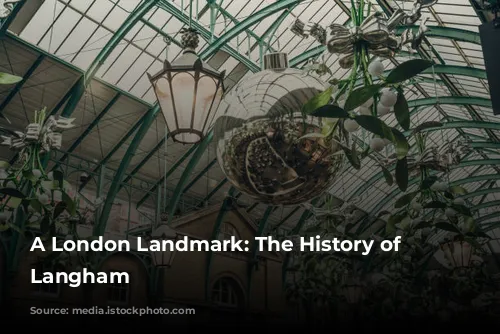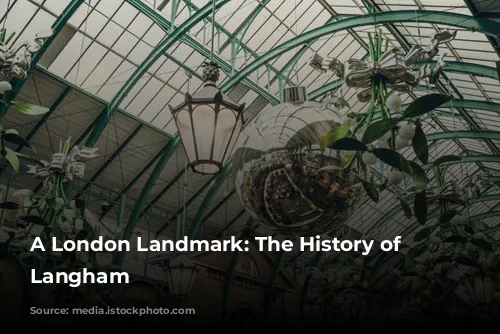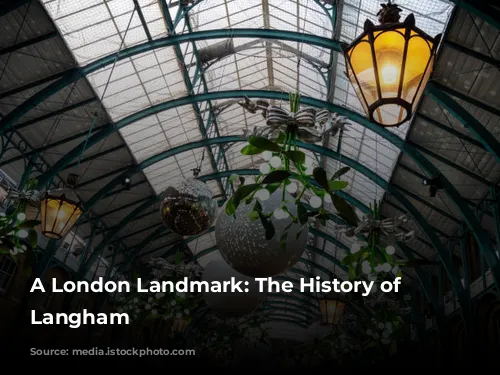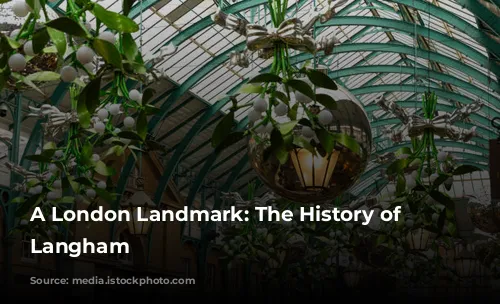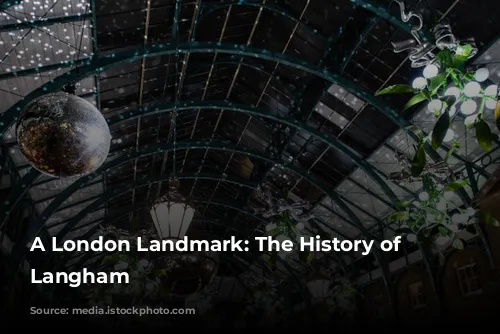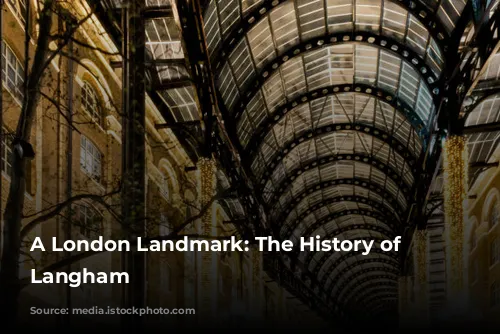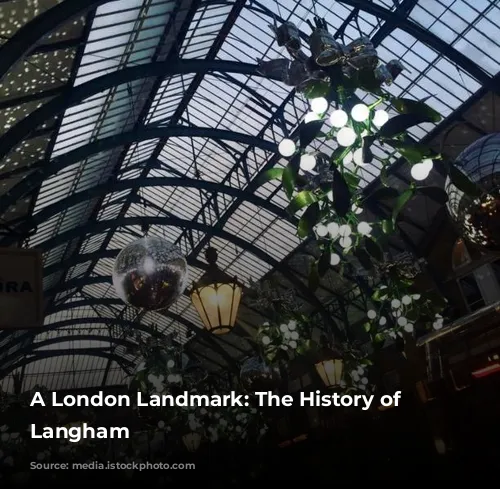The Langham, London is a name synonymous with luxury and history, standing as a testament to the city’s grandeur. Located in the heart of London, this five-star hotel boasts a rich past that spans over 150 years, a journey marked by royal patronage, literary connections, and remarkable transformations.
From Grand Opening to Literary Hub
The Langham, built between 1863 and 1865, was a revolutionary feat of engineering, featuring cutting-edge amenities for its time, including hydraulic lifts – a first in England. At its opening, the Prince of Wales graced the occasion with his presence, marking the beginning of a storied journey for the hotel.
Despite an initial financial setback, the Langham quickly found its footing, becoming a haven for celebrities and influential figures from across the globe. James Sanderson, an American Union Army officer, took the reins as general manager in 1867, attracting a wealthy American clientele including Mark Twain and the financier Hetty Green. The Langham also welcomed luminaries like Napoleon III, Oscar Wilde, and renowned composers like Dvorák, Toscanini, and Sibelius.
The hotel became a hub of literary inspiration, with Arthur Conan Doyle setting parts of his Sherlock Holmes stories – “A Scandal in Bohemia” and “The Sign of Four” – within its walls. The Langham’s Palm Court, with its elegant ambiance, became a place where creativity blossomed, hosting a meeting in 1889 between Oscar Wilde, Arthur Conan Doyle, and Joseph Marshall Stoddart, which led to the publication of both “The Sign of Four” and “The Picture of Dorian Gray” in Lippincott’s Monthly Magazine.
A Wartime Interlude and a Rebirth
Despite its early success, the Langham faced challenges. The Great Depression took its toll, and the hotel narrowly escaped demolition when the BBC considered acquiring the property. However, the Second World War brought a more immediate threat, with the hotel damaged by bombs and forced to close its doors. During the war, the Langham served as temporary housing for the British Army, reflecting its unwavering resilience in the face of adversity.
After the war, the BBC took over the hotel, ultimately purchasing it in 1965. It remained under the BBC’s ownership for several years, even experiencing a rather unfortunate incident when Guy Burgess, a member of the Cambridge Five spy ring, attempted to break into his room using a fire extinguisher.
A Legacy of Luxury and Transformation
The 1980s marked a turning point for the Langham, as the BBC sought to replace the hotel with a modern office development. However, plans were abandoned, and the property was sold to the Ladbroke Group in 1986. After a meticulous restoration and a multi-million pound refurbishment, the Langham reopened its doors in 1991 as The Langham Hilton, re-establishing itself as a beacon of luxury.
In 1995, Hong Kong-based Great Eagle Holdings acquired the hotel, embarking on a series of expansions and refurbishments that culminated in the restoration of the hotel to its original glory. This meticulous restoration extended to the Palm Court, bringing back its timeless charm, allowing guests to once again experience the elegant tradition of afternoon tea.
A Continued Legacy of Luxury and Innovation
Today, The Langham continues to exude elegance and sophistication, featuring 380 beautifully appointed rooms, a world-class business center, and 15 stunning function rooms, including the grand Ballroom. The hotel also boasts a vibrant culinary scene, with a newly opened restaurant, Mimosa, a British tavern, the Wigmore, and Artesian, a renowned cocktail bar.
The Langham’s legacy extends beyond its opulent interiors and meticulous service. It stands as a testament to the city’s enduring spirit, its ability to adapt and flourish through the changing tides of time. The Langham is more than just a hotel; it is a symbol of London’s rich history and its unwavering commitment to excellence, ensuring that its timeless charm will continue to enchant generations to come.
